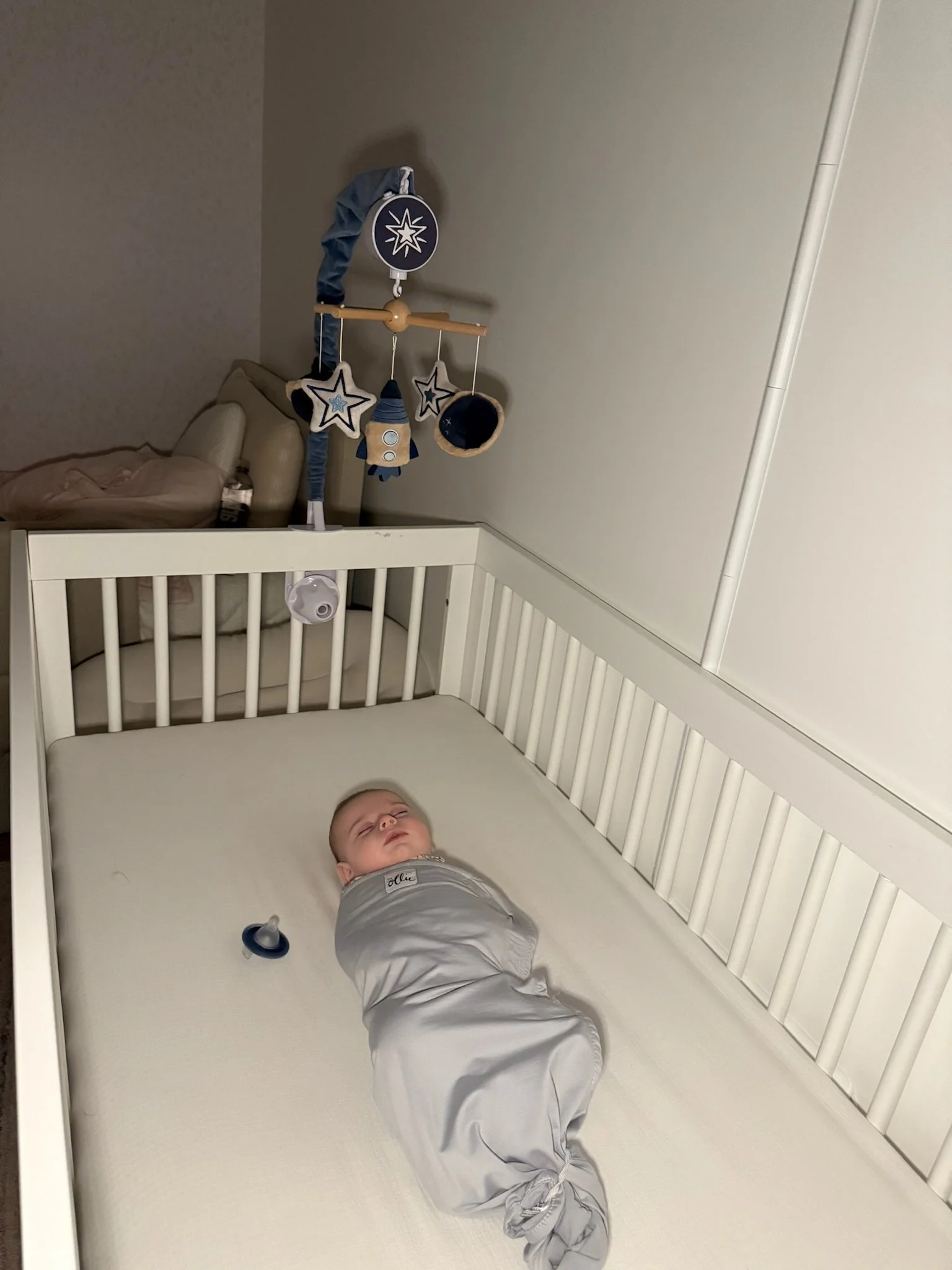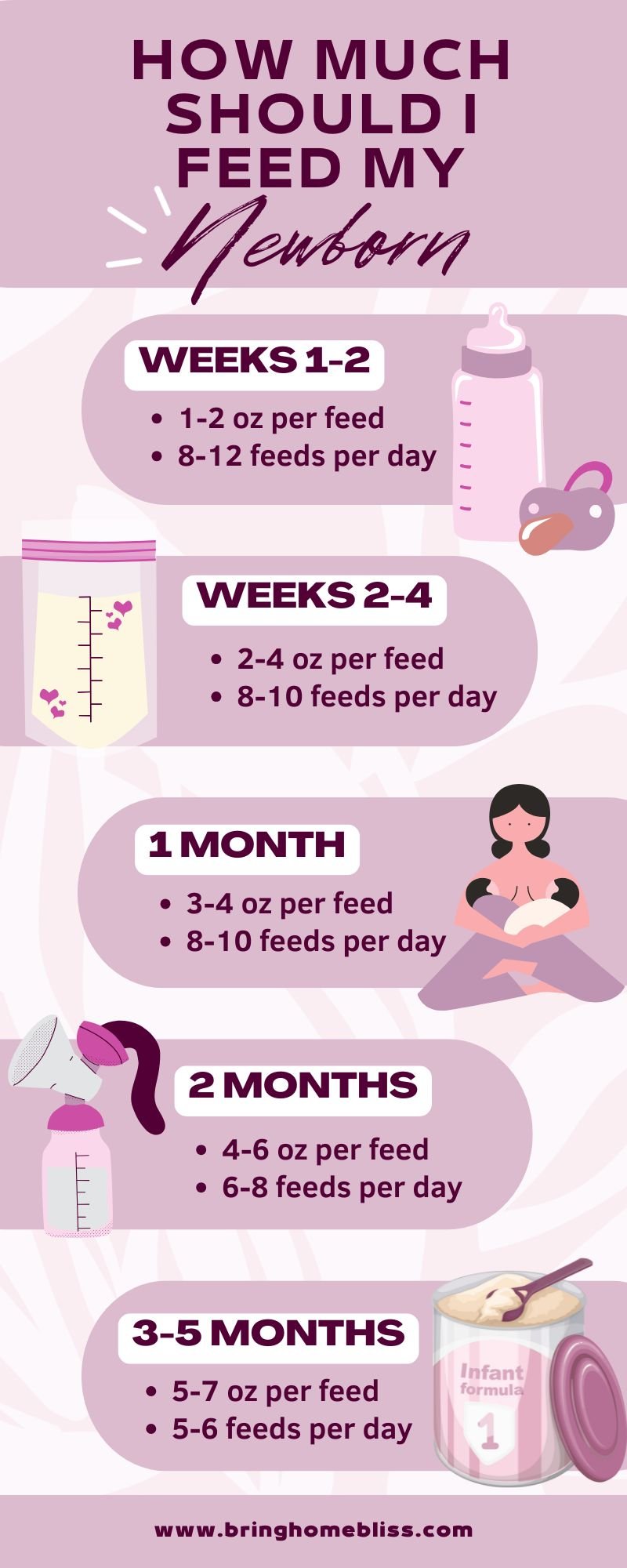How Much To Feed A Newborn: Feeding Chart
In the first days and weeks after giving birth, newborn feeding can feel confusing? Unpredictable? Exhausting?! As a postpartum doula and lactation consultant, I’m here to help demystify the whole newborn feeding experience so you know what is normal, what isn’t and how much you’re actually supposed to be feeding your baby.
I like to remind families that these early feeds are about more than just nutrition. They also help establish your milk supply, regulate your baby’s blood sugar, and strengthen the bond between you and your little one.
Early Stages: Colostrum and Milk Coming In
During the first few days, your body produces colostrum: a thick, nutrient dense milk that’s often called liquid gold. It’s packed with antibodies and nutrients that help protect your baby from illness and support their brand-new digestive system.
Your baby’s stomach is about the size of a marble at birth, so they only need about 1–2 ounces per feeding in the beginning. That’s why those frequent feeds (usually every 1–3 hours) are so important. They not only meet your baby’s nutritional needs but also signal your body to transition from colostrum to mature milk around day three to five.
You might notice your breasts feeling fuller or even a bit tender! That’s a sign that your milk is “coming in.” Feeding frequently, hand expressing, or gentle pumping can help ease that fullness while keeping the milk flowing.
Cluster Feeding: Why It Happens (and When It Gets Easier)
Another one of those things nobody seems to tell you about until AFTER the baby is born! If your baby suddenly wants to nurse or bottle-feed almost constantly (especially in the evening) then you’re probably experiencing cluster feeding. It can be one of the most tiring parts of early postpartum life, but it’s also completely normal.
Cluster feeding helps regulate your milk supply, comfort your baby through developmental leaps, and start to prepare them for longer stretches of sleep (something every new mom looks forward to). Most families find that these marathon feeding sessions start to ease up around the two-month mark, when babies become more efficient eaters and their sleep cycles start to lengthen.
If you’re in the thick of it, try setting up a cozy “feeding station” with water, snacks, a phone charger, and something comforting to watch or read.
When to Expect Longer Night Stretches
In the beginning, babies wake frequently to feed. As often every 2–3 hours. This pattern protects your milk supply and ensures your baby gets enough calories for growth.
As your baby gains weight and your supply regulates, you’ll start noticing a longer stretch of sleep in the first half of the night. It’s often between bedtime and midnight. This is a sign that your baby’s stomach can hold a bit more milk and that their circadian rhythm is (finally!) developing.
At this stage, most babies no longer need a dream feed (a late-evening feed while they’re still asleep). Once your baby naturally begins that longer initial stretch, there’s usually no need to wake them for an extra feeding unless recommended by your pediatrician.
How Much to Feed Your Newborn Baby
So how much are you actually supposed to feed your newborn baby? I put together an easy visual for you to understand how much to give your newborn at each stage from day one to up to five months old.
Make sure to bookmark this post or pin this newborn feeding chart to your boards on Pinterest so you can always come back and reference it!
Signs Your Baby Is Getting Enough Milk
Feeding patterns can totally vary, but these are reassuring signs that things are going well:
Steady weight gain after the first week of life
At least 6–8 wet diapers per day after your milk comes in
Periods of alertness between feeds
Audible swallowing and satisfied, relaxed behavior after feeding
If you’re unsure, your postpartum doula or lactation consultant can help assess your baby’s latch, feeding patterns, and diaper output to ensure everything’s on track.
Feeding Your Baby Your Way
Whether you’re breastfeeding, pumping, using formula, or a mix of all three, remember that fed is best. What matters most is that your baby is nourished and that you feel supported in your feeding choices.
Every baby (and every parent) has a different journey. Some find breastfeeding comes easily, while others face challenges (or simply prefer) that make pumping or formula a better fit. There’s no single “right” way to feed your baby, only the way that works best for your family and supports your mental health.
You are doing a wonderful job. However you feed your baby, your love and intention behind it matter most.
When to Reach Out for Help
If feeding feels painful, your baby is struggling to latch, or you’re worried about their intake, reach out. A postpartum doula, lactation consultant, or pediatrician can help you troubleshoot and create a plan that works for you. Early support often makes all the difference in helping you feel confident and calm during those first few months.
If you’re feeling unsure or just want someone to walk through feeding or newborn routines with you, I’m here to help. I offer virtual postpartum support and one-on-one calls to answer your questions, troubleshoot feeding challenges, and help you feel calm and confident in these early weeks.
👉 Book a virtual session or learn more about my postpartum support services.


